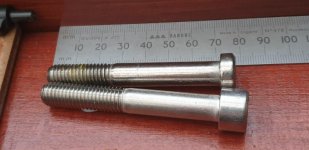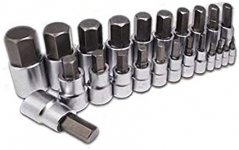I am getting ready to tackle taking the two top steering bolts off of my new 2020 RTL to install my GPS mount. I am looking for advice on how to prevent stripping these bolts as I have seen quite a posts from frustrated owners asking "how to" remove stripped steering bolts, but upon researching here not many tips on how to prevent this in the first place. These bolts are obviously super tough to remove and have loctite applied. I purchased a quality metric hex wrench set and the 7mm fits really good. Other than putting a towel down to prevent bolts from falling down into the console/engine compartment and hitting the wrench top with a hammer to make sure the hex seats in the bolt tightly, any other advice?
-
There were many reasons for the change of the site software, the biggest was security. The age of the old software also meant no server updates for certain programs. There are many benefits to the new software, one of the biggest is the mobile functionality. Ill fix up some stuff in the coming days, we'll also try to get some of the old addons back or the data imported back into the site like the garage. To create a thread or to reply with a post is basically the same as it was in the prior software. The default style of the site is light colored, but i temporarily added a darker colored style, to change you can find a link at the bottom of the site.
Steering Bolt Stripping Prevention
- Thread starter giantjas
- Start date


